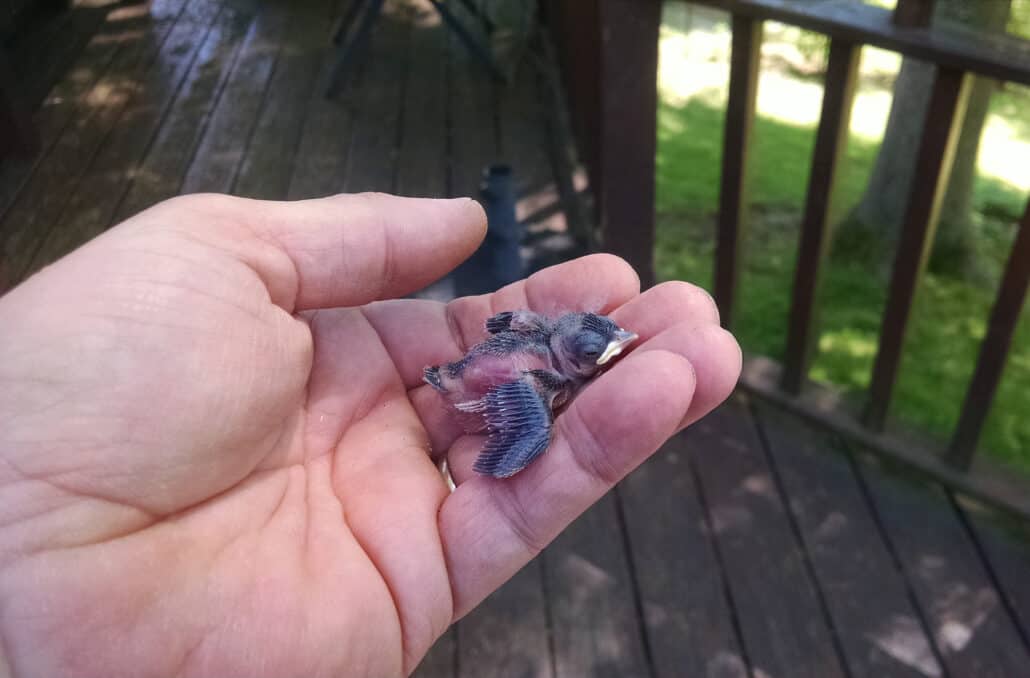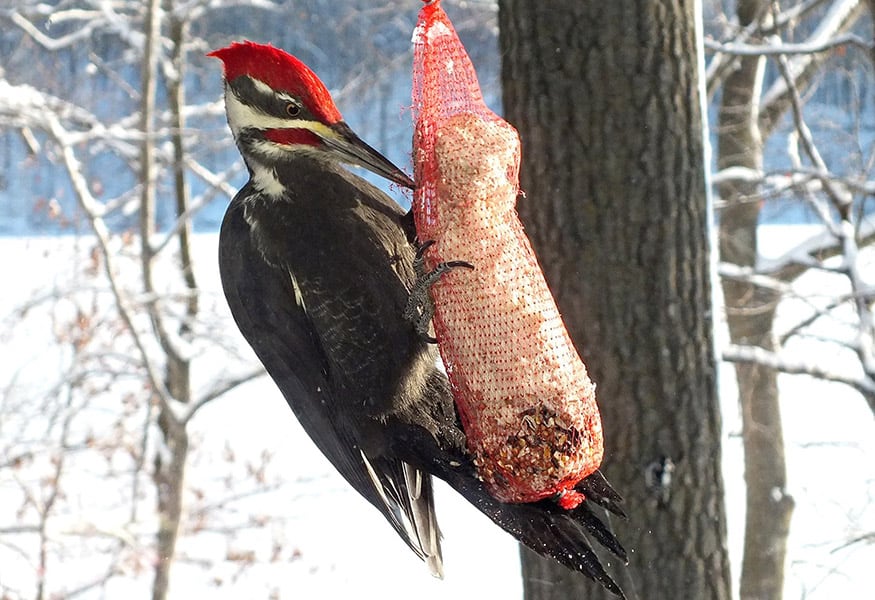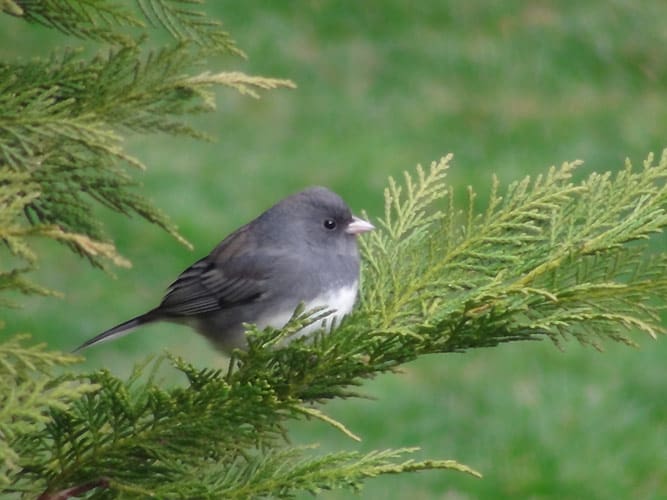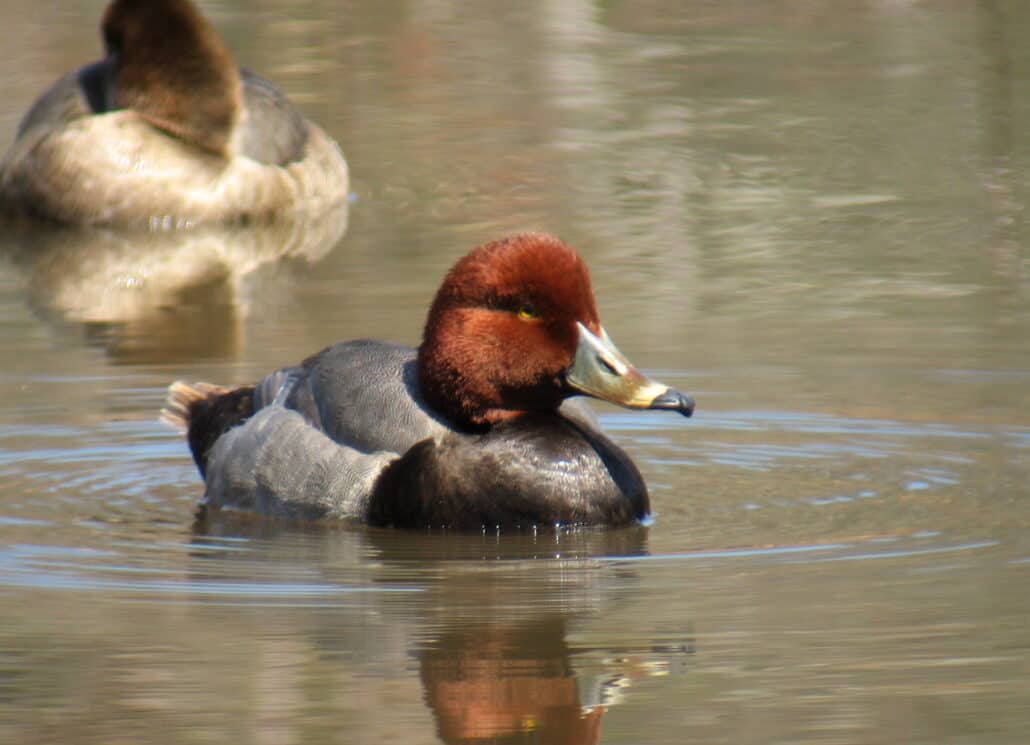Is the baby a nestling or a fledgling? Nestlings are featherless or nearly so, and their eyes are not opened, or have opened only recently. Nestlings don’t have strong muscles, and would have no chance of survival out of the nest. The best hope for a nestling that fell or was blown from its nest is to place it back in the nest, if at all possible.

Fledglings might not be fully feathered, but they do have most of their feathers, and can hop on the ground. It is natural for fledglings of many species to clamber around on branches near the nest until they can fly, or even on the ground in vegetation below the nest. Their parents will care for them during this period.
If the fledgling is in immediate danger (in a road or near a predator), move it to a higher branch or other cover as close as possible to where you first found it. Confine cats and dogs.
Withdraw to a good distance and simply watch the bird, preferably through binoculars. Allow the parents, if they are present, to attend the fledgling. Don’t immediately assume it’s not being cared for, even if an hour passes without seeing a parent arrive.
Look and listen for others of its species. Constant contact calls given by fledglings serve to keep their parents apprised of their whereabouts.
If you see an adult of its species nearby, especially one carrying food, you may assume that a fledgling will be fed and cared for.
If several hours pass and you do not see an adult tending the fledgling, walk the area around it, looking and listening for other fledglings giving the same calls. It’s probable that this one has just become separated, and it may need to be carried over to join the rest. Head for the thickest nearby cover: Parent birds lead their young toward cover soon after fledging.
Resist the temptation to carry out a well-intentioned abduction. A baby bird’s best chance for survival is always with its own parents. Playing a recording of the bird’s song is a great way to summon them. Note where the first answer comes from and try to locate the family there.
If you are sure the parent birds are nowhere to be found, it’s time to contact a wildlife rehabilitator. State environmental departments, local wildlife officers, nature centers, and some veterinarians keep lists of people to call. Until you get in touch with a rehabilitator, try offering soaked dog or cat chow in little balls, offered in a tweezers or on the end of a Popsicle stick.
A gentle whistle and tickling the corners of the mouth may stimulate the fledgling to gape and be fed. Young fledglings need to be fed at least once an hour during daylight hours; they sleep at night.




